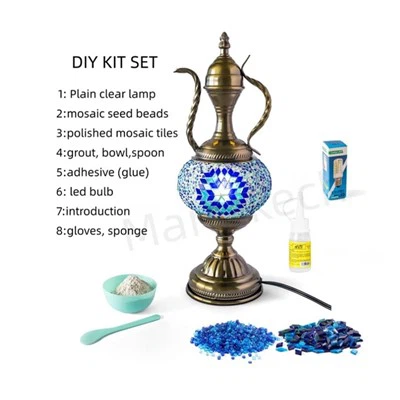Turkish and Moroccan lamps are both renowned for their unique and intricate designs, and they share some similarities, but they also have distinct differences. Here's a comparison of Turkish and Moroccan lamps:
1. Geographical Origin:
- Turkish Lamps: As the name suggests, Turkish lamps originate from Turkey. They are deeply rooted in Turkish art and culture.
- Moroccan Lamps: Moroccan lamps come from Morocco, which is located in North Africa. They are a reflection of Moroccan and Islamic design traditions.
2. Design and Patterns:
- Turkish Lamps: Turkish lamps often feature a wide range of intricate and colorful patterns, including geometric and floral designs. They are characterized by their vibrant, multi-colored stained glass and mosaic work.
- Moroccan Lamps: Moroccan lamps are known for their emphasis on geometric patterns and symmetrical designs. They commonly incorporate Moorish and Islamic motifs, such as star patterns and arabesques. Moroccan lamps often feature clear or colored glass with pierced metalwork, allowing light to filter through the intricate patterns.
3. Materials:
- Turkish Lamps: Turkish lamps are typically made with colorful glass and mosaic work, along with metal accents like brass or copper.
- Moroccan Lamps: Moroccan lamps are predominantly crafted from metal, often brass or iron, along with glass panels. The glass can be clear or stained, and it often features intricate perforations.
4. Colors:
- Turkish Lamps: Turkish lamps are known for their use of a wide array of colors, creating a vibrant and dynamic aesthetic.
- Moroccan Lamps: Moroccan lamps often use a more subdued color palette, with a focus on earthy tones and metallic finishes, creating a warmer and cozier ambiance.
5. Symbolism:
- Turkish Lamps: Turkish lamps may not have specific cultural or symbolic significance but are celebrated for their artistic and aesthetic qualities.
- Moroccan Lamps: Some Moroccan lamps, especially those with geometric patterns, may have symbolic meaning in Islamic culture and architecture. They may represent spiritual concepts or cultural values.
6. Usage:
- Turkish Lamps: Turkish lamps are often used as decorative pieces and functional lighting in homes and commercial spaces. They are frequently hung as pendants, used as table lamps, or employed for ambient lighting.
- Moroccan Lamps: Moroccan lamps are widely used for ambient and mood lighting. They are commonly hung as pendant lights and lanterns and placed in various spaces to create an exotic and relaxing atmosphere.
In summary, while Turkish and Moroccan lamps share a commonality in their ornate designs and craftsmanship, they each have distinct characteristics that reflect their respective cultural and geographical origins. The choice between Turkish and Moroccan lamps largely depends on personal aesthetic preferences and the desired ambiance for your living space.






